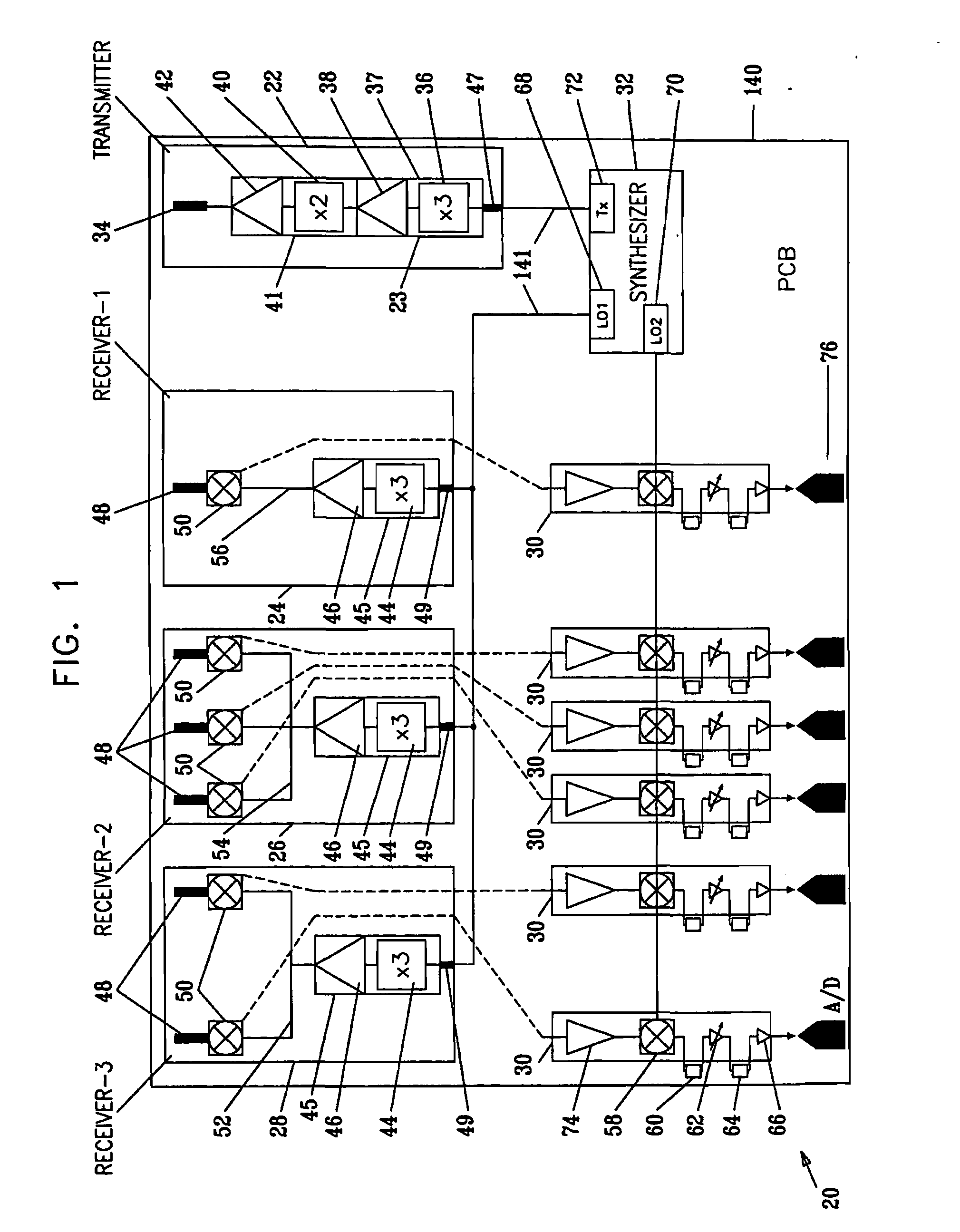RF system concept for vehicular radar having several beams
a vehicular radar and beam technology, applied in the direction of antennas, coupling devices, printed circuit aspects, etc., can solve the problems of unfavorable mass market application, cross talk between adjacent components, and inability to implement a simple, efficient transceiver, so as to facilitate coupling to the pcb and simplify the mounting of components
- Summary
- Abstract
- Description
- Claims
- Application Information
AI Technical Summary
Benefits of technology
Problems solved by technology
Method used
Image
Examples
Embodiment Construction
[0070]Reference is now made to FIG. 1, which is a schematic block diagram of a millimeter wave multiple beam transceiver 20, according to a preferred embodiment of the present invention. Transceiver 20 comprises a transmitter module 22 which generates millimeter (mm) waves, at frequencies of the order of W-band, the mm waves being coupled to a transmitting antenna via a mm wave microstrip-waveguide transition 34, which acts as a mm wave output port. Herein, millimeter (mm) waves are assumed to be waves having frequencies of the order of W-band. In order to generate its mm waves, transmitter 22 receives a low frequency (LF) reference signal, at frequencies of the order of 12 GHz, from a frequency synthesizer 32. The LF signal is received via a microstrip-microstrip transition 47, which acts as an LF inlet port to transmitter module 22.
[0071]Transmitter 22 comprises a x3 frequency multiplier 36, a first amplifier 38, a x2 frequency multiplier 40, and a second amplifier 42, connected i...
PUM
 Login to View More
Login to View More Abstract
Description
Claims
Application Information
 Login to View More
Login to View More - R&D
- Intellectual Property
- Life Sciences
- Materials
- Tech Scout
- Unparalleled Data Quality
- Higher Quality Content
- 60% Fewer Hallucinations
Browse by: Latest US Patents, China's latest patents, Technical Efficacy Thesaurus, Application Domain, Technology Topic, Popular Technical Reports.
© 2025 PatSnap. All rights reserved.Legal|Privacy policy|Modern Slavery Act Transparency Statement|Sitemap|About US| Contact US: help@patsnap.com



